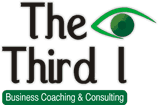Our Process
Process
Business Coaching & Consulting
"Goals. There's no telling what you can do when you get inspired by them.
There's no telling what you can do when believe in them.
There's no telling what will happen when you act upon them."
~ Mark Victor Hansen

Our Coaching Process
- A collaborative process between a coach and a client as a response to a desire for change. It takes courage to change.
- To create higher levels of awareness of a client’s unique gifts, talents and capabilities as contributing factors to career excellence.
- Creating alignment between client’s values, goals and beliefs and that of the environment/organization the client works in or wants to transition into.
Our Coaching Process- 3 Stage Approach
Foundation Stage
- Discuss and identify a personalized development or transition plan.
- Tools include: Customized Discovery Session, Goal Setting, Value Assessment
Building Stage
- Leverage a set of tools and methodologies that aid the individual in clarifying and achieving their goals and objectives within the development or transition plan, while also facilitating personal and organizational change.
- Tools include: VIA Signature Strengths™, Strengths Finder 2.0™, Emotional Intelligence Finder 2.0™ Sidle’s Leadership Wheel™, Learner/Judger Model™, Values Profile and others
Completion Stage (Action/Accountability)
- Support the client’s ongoing development, performance or fulfillment goals and engage a feedback mechanism to measure progress
- An action learning approach is enabled to facilitate behavioural change aligned with the desired results. Client self awareness and reflection is held at the center of this approach to increase the effectiveness of learning and change
- Equip the client with new skills, tools, language and habits to support their future success
Adler© Coaching Model
We use the ©Adler Coaching Model approach that facilitates change as we move towards the desired results as follows:
Performance Goals: a focus on more external accomplishments, such as:
- Increase sales by xx% by end of the year
- Build a more effective team
- Create stronger customer/consumer relationships
Learning Development Goals: a change that takes place within the employee, such as:
- Enhance listening skills
- Develop higher level of interpersonal skills
- Become a more capable communicator
Fulfillment Goals: the basic motivation for the performance and learning development goals
- Understanding the force and need that drives you to reach a goal

Successful Outcomes
- Create performance ownership
- Support employees in their quest to develop and enhance their unique skills and capabilities
- Support the alignment of the employees’ goals and the organization’s goals
- Have employees feel more valued
- Improve cross-functional and interpersonal relationships
- Create awareness and appreciation for different styles of leadership
- Creating an environment that drives increased productivity
- Growth for the employee and the organization
- Have employees feel more valued and Improve high potential employee retention through focused development
- Reduce turn-over by improving organizational relationships and strengthening employee development
- Strengthen accountability by adopting collaborative approaches that also accelerate results
- Increase resilience with change and reduce the impact of change paralysis on productivity
- Increase internal promotions through targeted skill and interpersonal development
- Attract better quality talent by creating a development-oriented culture
- Mitigate conflict and unhealthy competition and reduce the drain on efficiency and focus
- Improve acceptance of diversity that increases access and incorporation of new ideas and processes for effectiveness
Affiliations


